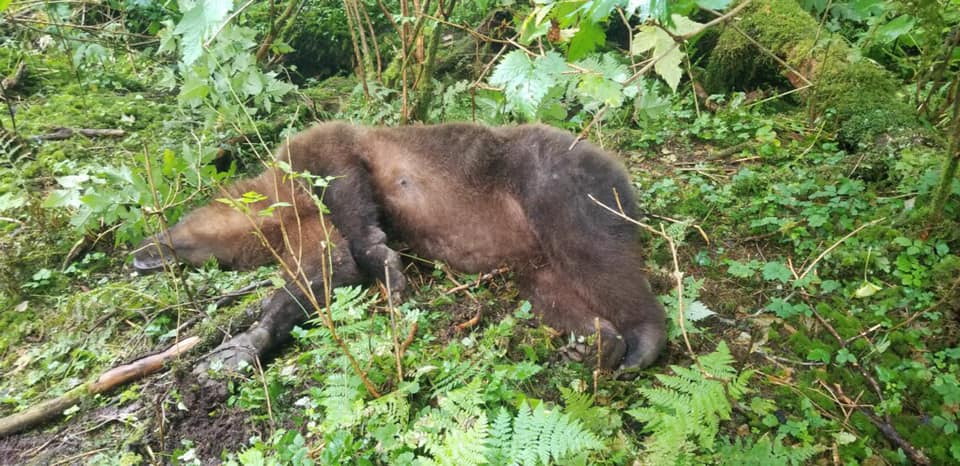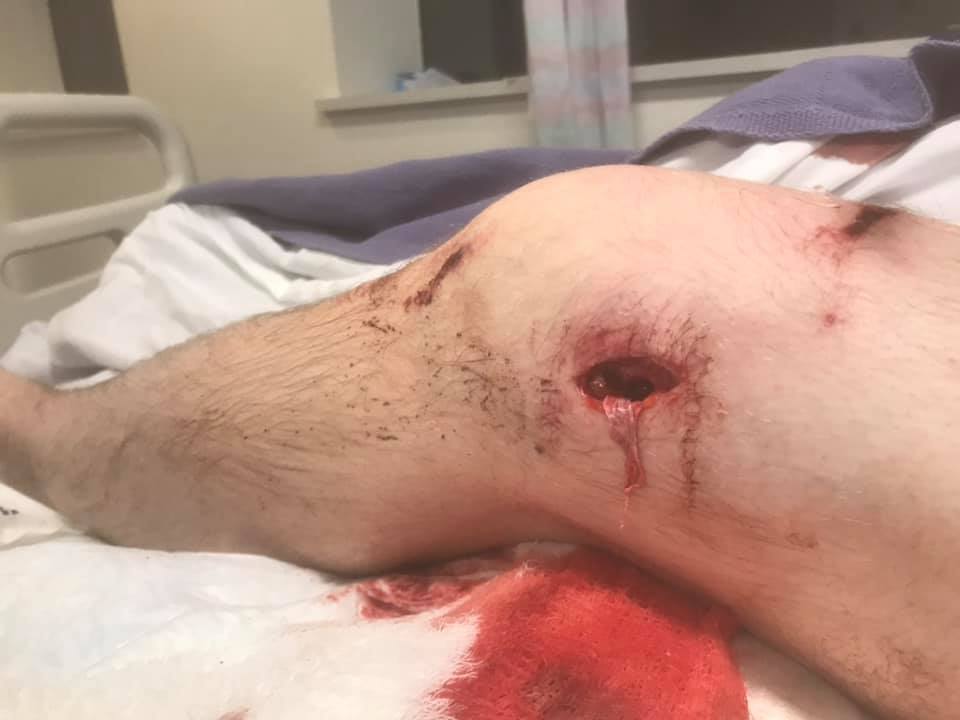For his lived and professional lives, Jess Coltharp has spent his years living and working amongst North America’s apex predators: bears.
In southeast Alaska, the Last Frontier’s largest terrestrial predator is often quite literally in one’s backyard. And 14 summers spent working as a surveyor with the Alaska Department of Fish and Game meant that Coltharp spent his days hiking through bear country, counting local populations of salmon — Alaskan coastal bears' preferred snack.
And Aug. 22, 2021, was just another day in Coltharp’s rainforest office. In an exclusive interview with Snopes, the 31-year-old Alaskan said he was hiking along a stream with two colleagues when, seemingly out of nowhere, he heard several branches crackle and break from where he was standing.
Coltharp was working with two other men in a location known as Ford Arm, which is home to a creek of the same name on Chichagof Island. An abundant population of an estimated 80,000 coho salmon spawns here every year at the end of summer and beginning of fall, making it an ideal location for bears to feed and prepare for the long winter ahead.
“I was about 15 feet from the other guys when I heard the branches start to snap,” Coltharp told Snopes. “I turned back around, and the bear was coming at me, flying out of the thick of the salmonberry brush. It was just way too quick to do anything about it.”
In an instant, a 7-foot-tall, approximately 500-pound adult male bear latched on to Coltharp’s left knee with its 3-inch-long teeth, throwing the young man to the ground.
Coltharp was unsure what provoked the bear attack, but he said that the animal made “absolutely no noise prior to charging” and he believes that it was likely either startled after a nap or was protecting a fresh kill.
“This was definitely not a typical encounter by any means,” he added.
Another man with the group was able to shoot and kill the bear — an accomplishment that Coltharp credits with proper backcountry and trauma training. After the three men were able to confirm that the bear was dead, they used a wader belt as a tourniquet above his knee to stop the bleeding before hiking the half-mile back to the beach and calling for a floatplane medivac to bring them to the nearest hospital.
“Adrenaline is insanely powerful. I was able to walk out mostly on my own power. I knew I had to get out of there,” said Coltharp.
At the hospital, Coltharp learned that despite clamping down on his left thigh and knee, the bear did not reach any major arteries or break any bones and all the ligaments remained intact.
“I’m counting my blessings,” he told Snopes.
"Grizzly bear" is a colloquial term for brown bear in southeast Alaska but does not refer to any specific species of subspecies. Bears from different habitats have different behaviors based on survival strategies and food sources — some bears learn to dig clams or catch salmon, such as those found in Southeast Alaska. As Snopes previously reported, there are around 1,550 Alaskan coastal brown bears on the islands surrounding Coltharp’s hometown, according to the National Park Service (NPS). But despite a ratio of nearly one bear for every seven residents of Southeast Alaska, bear attacks are relatively few and far between. For the most part, experts note that bears will avoid humans at all costs.
The attack holds gravity with Coltharp, but it doesn’t change his respect for bears and the wildlife that call Alaska’s wilderness home. And he has no plans of letting his injuries keep him inside any longer than is required. Coltharp told Snopes that his goal after surgery and physical therapy is to have full mobility in time for November’s deer hunting season.
“It’s just a scar and story at this point,” said Coltharp.
(A fair warning that the images below of Coltharp’s wound are graphic.)



